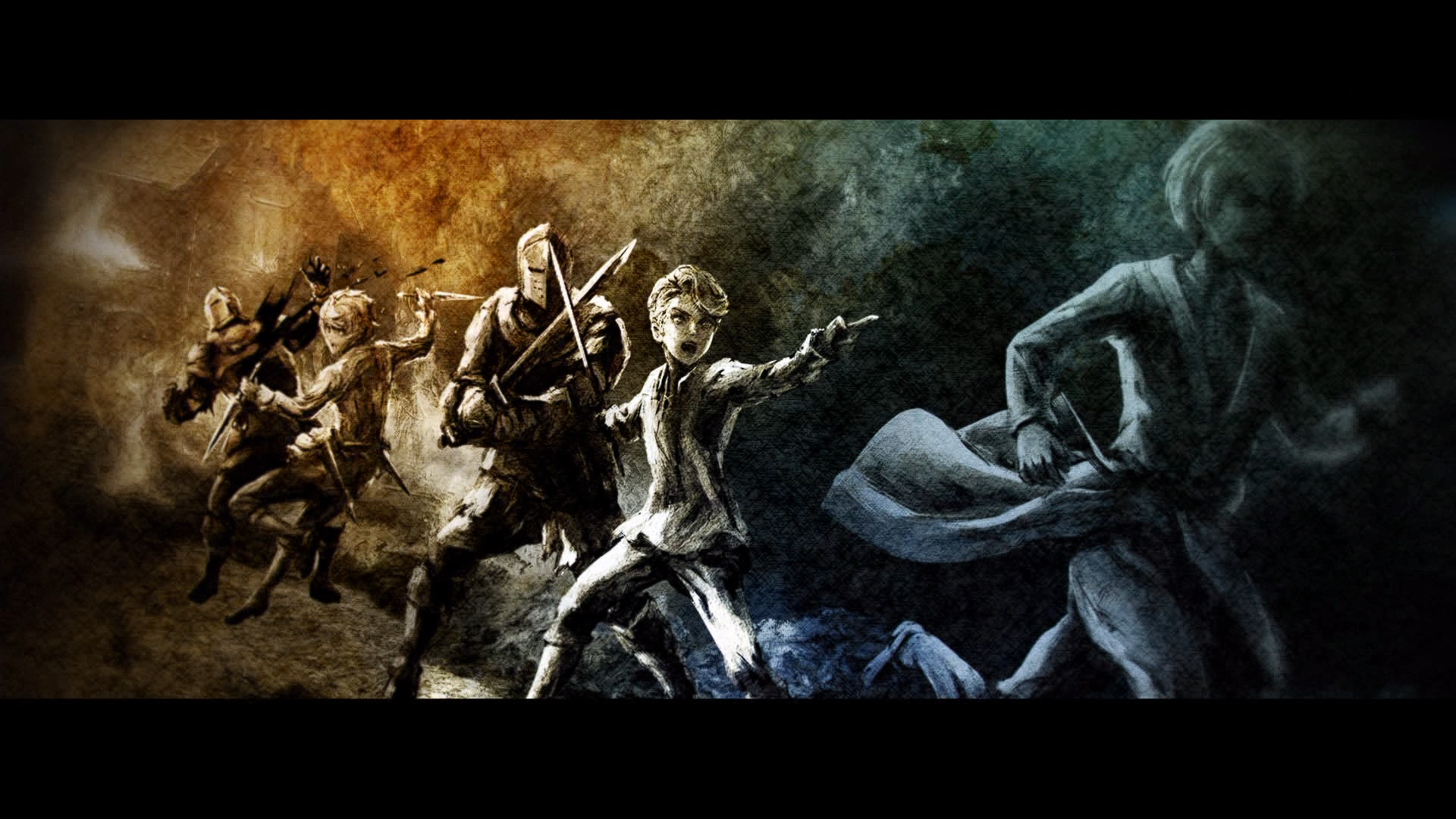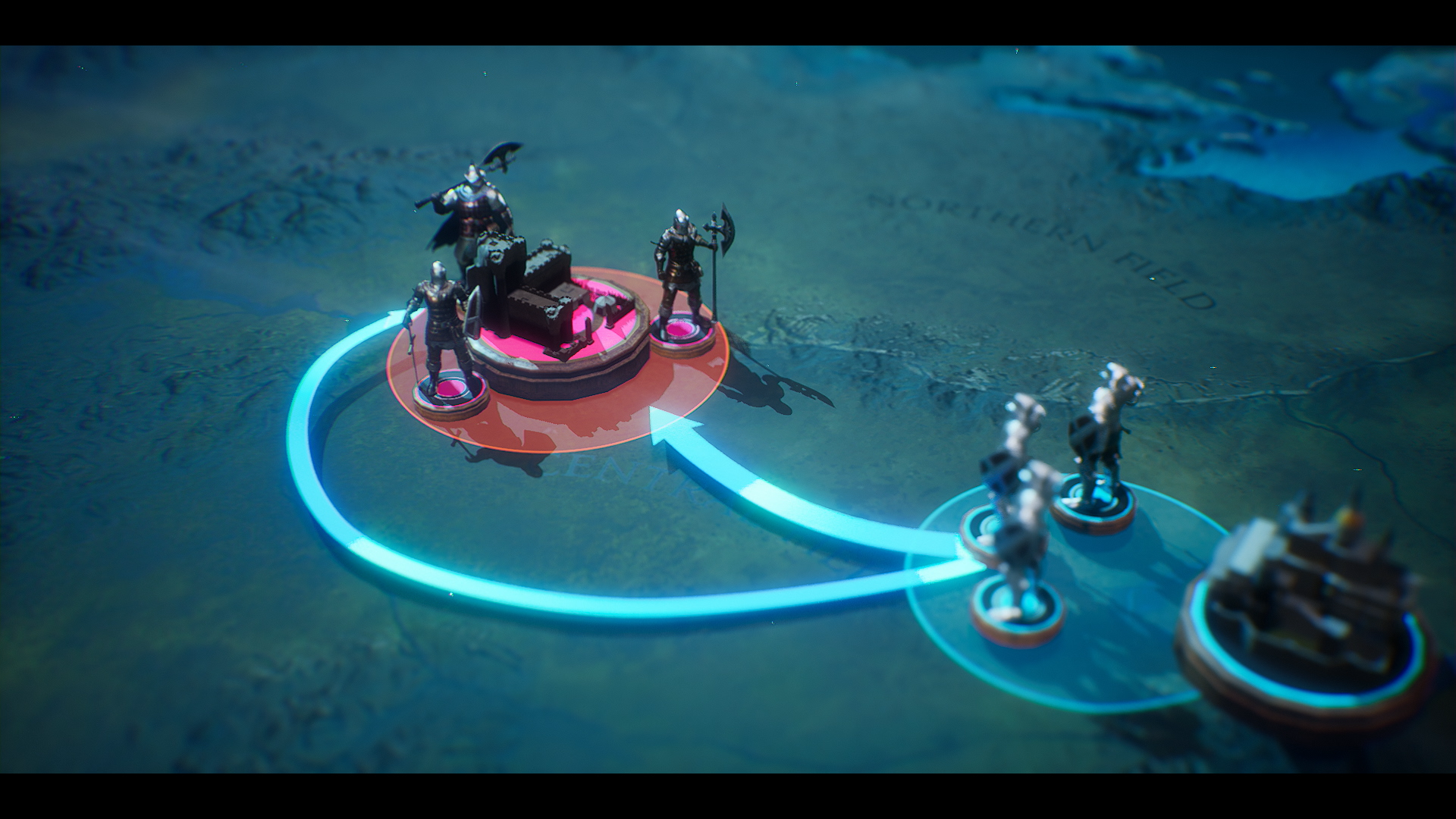The DioField Chronicle Review: Charting a New Course for SRPGs
When someone mentions the strategy or tactical RPG genre, it typically conjures up visions of turn-based combat taking place on a grid. Sure, there are exceptions, but the battlefields of games like Tactics Ogre, Final Fantasy Tactics, Disgaea, and Fire Emblem, with their planes squarely divided into rows and columns, have come to define the genre. The DioField Chronicle looks to break free of that grided prison. Developed by Square Enix and Lancarse (best known for Shin Megami Tensei: Strange Journey) and published by the former, The DioField Chronicle brings a fresh feel to strategic combat, even if what comes in between battles is underdeveloped.
The DioField Chronicle takes place on the island of DioField, located off the coast of a landmass referred to as "the continent." Two warring factions, the Schoevian Empire and the Rowetale Alliance, have been fighting for years, becoming deadlocked. They both turn their attention to DioField, which is rich in Jade, the fuel for modern magic. The sudden unwanted attention from the continent sends the balance of power on DioField into disarray as games of intrigue unfold between domestic rivals and foreign interlopers.

Players take control of Andrias. Once the chamberlain to a young prince of the ruling family on DioField, Andrias has since become a mercenary. Through the game's earliest events, he and three other principal characters -- Andrias' close friend Fredret, a knight errant named Iscarion, and a young noblewoman named Waltaquin -- come together to form the Blue Foxes mercenary company. Players experience the upheaval on DioField through their eyes, along with plenty of the internal drama among the group's various characters as the ensemble grows in size and reputation.
The narrative feels almost impenetrable at first. There are a lot of made-up words and unfamiliar proper nouns thrown around, and few of the political machinations playing out seem to have any meaningful impact on the lives of these characters. Throughout the game, many of the story's events are communicated through monologues from an unseen narrator between battles instead of seen or received through the characters' eyes, making it all feel a bit impersonal.

Given time, however, the story proves engrossing. It keeps players guessing who is manipulating whom as loyalties clash with ideals. It's all wrapped in a certain irony as it lays bare the corruption of one societal institution after another even as the integrity of the Blue Foxes company itself struggles beneath the weight of its increasing size and influence.
For fans of the SRPG genre, the game's narrative will be reminiscent of Final Fantasy Tactics, Tactics Ogre, and Fire Emblem. For more mainstream-minded audiences, the touchstone will likely be the television series Game of Thrones, which seems to be a comparison Square Enix is leaning into by hiring the show's composers, Ramin Djawadi and Brandon Campbell, to score the game. Djawadi and Campbell turn in subtle work that fits the narrative and is easily listenable to for hours at a time.
The DioField Chronicle tosses turn-based grid combat in favor of the "real time tactical battle" system. That sounds brand new but should feel familiar to anyone who has played a game in the MOBA genre like League of Legends or Defense of the Ancients. Combat takes place in real-time, though time stops while giving commands. Players control a group of four characters, giving them orders as they charge into battle with opposing forces, alternating between auto-attacking and activating skills. The strategic elements don't revolve around strong positioning (though attacking from behind yields increased "ambush" damage, and players will want to learn how to pull enemies away from large groups and cannon turrets). Instead, most of the players' strategic energy in combat goes toward synergizing as they try to use their units' skills to maximize DPS, area of effect attacks, timed buffs, and refresh rates.

Speaking as someone who has never been particularly good at MOBAs, The DioField Chronicle posed little in the way of challenge. I could practically sleepwalk through battles on normal difficulty while hard yielded only a few setbacks, mainly suffered due to minor mental lapses rather than because I faced a difficult opponent. Players can up the game's speed to 1.5x or 2x the norm, increasing the difficulty proportionally as it requires players to make decisions faster. However, I found this an unsatisfying challenge as it relies on hecticness rather than craftier tactics or fiercer enemies. Also, playing on a PlayStation 5, the increased speed highlights the limitations of the console-based control scheme, which has players using shoulder buttons to scroll through characters one at a time or otherwise finding them amidst the chaos on the map with an analog stick-controlled cursor. But it speaks to the solid fundamentals of The DioField Chronicle's combat that I never got bored and continued to find battles engaging even dozens of hours into the game.
In between bouts of bloodshed, players are free to roam the halls of the Blue Foxes' home base, Elm Camp. Here, players can have Andrias speak to the other characters, take on sidequests, buy items, and upgrade skills and weapons. At first, it seems comparable to Dragon Age: Inquisition's Skyhold or Fire Emblem: Three House's Garreg Mach Monastery, but players will quickly learn that it lacks the depth or personality of those other bases.

Conversations between characters are not interactive, and there is no system for character bonds. Instead, each conversation is like a sidequest that yields resources to fund unit upgrades or otherwise unlocks an optional battle that, upon completion, will yield resources to fund unit upgrades. Conversations are entirely linear and only nominally optional (conversations and sidequests are the only way to gain the funds for upgrades). Elm Camp is, physically, little more than a few dark rooms and hallways, and the upgrade and store functions are accessible from a menu at the start of a battle. Thus, the base's existence feels like a vestigial limb, as if the designers planned to do more with it initially but then ran out of time or money, but only after they reached the point where it'd be too costly to remove it entirely.
However, while the home base aspect of the game is underdeveloped, the combat at the core of The DioField Chronicle is a breath of fresh air. Paired with a story steeped in intrigue and drama, The DioField Chronicle will likely satisfy fans of the genre while possibly charting a new path for it in the future.
Rating: 4 out of 5
The DioField Chronicle goes on sale September 22nd for Nintendo Switch, PlayStation 4, PlayStation 5, Xbox One, Xbox Series X, and Windows PC. It was reviewed on a PlayStation 5 with a review code provided by the publisher.